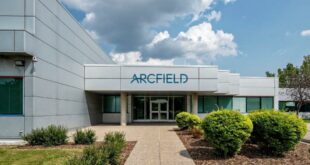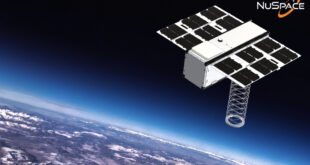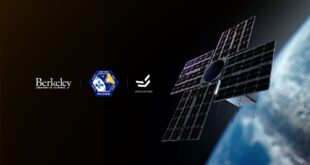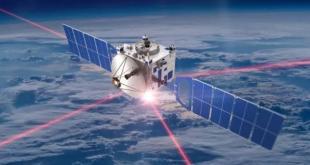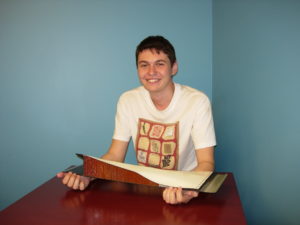
Alexander Shaenko is a Moscow-based engineer and space enthusiast, the driving force behind the Mayak cubesat developed by space enthusiasts that was launched in 2017. He is currently working on a new space-related project. We talked to him about his past and present activities, his views on the current situation in the Russian space sector, ways to engage young people in space projects and much more.
Alexander, please, tell us about yourself. How did you get involved in the space sector?
I think I joined the space industry mainly because my dad served in the Space Forces, at several ground telemetry stations. In such a place space feels like the real thing. You can see it with your own eyes. I could look closely at the huge space antennas, and that is why I probably became interested in space technology.
Then I became a student at Bauman Moscow State Technical University at the Space Vehicles and Launch Vehicles department of the Special Engineering faculty. Seeing real rockets and satellites and thinking about the complexity of what people can develop really boosted my interest in space technology.
What space industry enterprises have you worked at and what space projects have you been involved in?
I started working in the space industry when I was in my 4th year at the university. There is the Special Engineering Research Institute division at my department, and I was engaged in modeling deployment of large space structures such as spacecraft antennas and solar panels.
After that, I worked at the Automechanics company, where I studied the absence of stress during the basic dynamic operations of the Angara-A5 launch vehicle and the South Korean KSLV-1(Korean Space Launch Vehicle) rocket.
Then I joined Progresstech. In collaboration with the Moscow Boeing Design Center the company developed various projects in the field of civil aircraft construction. At Progresstech I worked on two major projects. I also entered the postgraduate course of the Astro Space Center of PN Lebedev Physics Institute, where I was engaged in calculating the heat transfer for the heat shields of the Millimetron space telescope. I was tasked with creating software for the thermal calculation of the spacecraft’s main mirror and heat shields parameters.
A little later I joined a cool project called Selenokhod as a volunteer. We were the only team from Russia to take part in the Google Lunar X PRIZE contest. I eventually became one of the main designers of the project.
After a while, a part of the Selenokhod team joined the first team of the private Russian space company Dauria Aerospace, where my area of expertise was stress, heat transfer analysis and testing. My colleagues and I built the DX-1 spacecraft in about 18 months. Then I developed and supervised the Modern Cosmonautics educational program at the Moscow Polytechnic University. Both at the Bauman Moscow State Technical University and at the Moscow Polytechnic University, my friends and I started to develop the Mayak (‘Beacon’) satellite, the first Russian satellite made by enthusiasts with no practical experience in assembling spacecraft. Mayak was launched on July 14, 2017.
Now are developing a biological life support system based on microalgae with some members of the Mayak team. Our startup is called 435 nm. I am the project leader.
Tell us more about the 435 nm project.
There were several reasons why we created the 435 nm project (Project website, in Russian: https://boomstarter.ru/projects/shaenko/435_nm_zhit_za_predelami_zemli). We realized that we enjoy developing something together that has to do with space. The Mayak project continued for 3.5 years and it was very exciting to do. We felt that the next project should also be connected with space technology and that it should be commercial. Because it was quite difficult to work on the Mayak project for 3.5 years only as a volunteer.
We made a useful observation: it wasn’t very profitable to create a company engaged in satellite development in Russia at that moment, because the existing Russian private space companies didn’t show any rapid growth. Therefore, it was necessary to find a space-related activity that did not require to launch something into space in order to get profit. A number of ideas had been considered that could potentially become various projects. As a result, we thought that the most promising area for us was the development of a biological life support system based on microalgae.
We found out that extensive research into this area had been done in the Soviet Union, and we talked to the specialists from the Institute of Biomedical Problems (IMBP) of the Russian Academy of Sciences who still continue research in the area. We learned that microalgae such as chlorella, spirulina and others are actively used on Earth to purify air or water, as nutritional supplements, raw materials for biosynthesis, and much more.
Then we realized that it was possible to create a closed biosphere for crewed space flights on the basis of microalgae and even apply the same technologies here on Earth.
The initial project meetings began with a small number of participants, starting somewhere from December 2016, and lasted for five months. As it happened, December 2016 to May 2017 was a bit of a downtime for the Mayak project. During this period we were engaged in 435 nm project, and after the launch of the Mayak satellite we took some time to figure out what had happened to our spacecraft. Full-scale activity was resumed only in February 2018. We collected about $6,000 for the project by crowdfunding. We want the process of microalgae cultivation to require minimal human participation, be automatic and energy efficient. We are currently testing our hypotheses on experimental assemblies and we are looking for funding.
Now the 435 nm project is at the prototyping and testing stage. We hope that by the end of the year we will have developed a prototype to present it to the public and which will have both terrestrial and space applications.
Are you engaged in any educational activities?

Yes, I am. My colleagues and I are engaged in different educational projects, and the reason for this is quite simple. By the way, we had the same reason for creating the Mayak project.
We believe that the Russian space industry is now at a crossroads: there are a lot of changes going on, that’s why many space projects in Russia are either postponed for a short term or indefinitely, or modified. Therefore, there is currently no strong ‘space movement’ in Russia as there used to be in the Soviet years, or as there is now in some other countries.
I think we can improve it in many different ways. For example, by popularizing space exploration. We also believe that it is necessary to show people ‘live’ cosmonautics, which can be ‘touched’. That’s why we created the Mayak project. We are engaged in popular science projects and educational lectures, we have been organizing the Summer space school for four years. It gives us a possibility to solve various problems in space exploration, to gather people from all over the country, to meet with cosmonauts, entrepreneurs and interesting professionals from the industry. It’s a kind of space networking.
What definition will you choose for the Russian private space sector? Is it just in its nascency? Or is it in the stage of active development?
I would say that private Russian space business is at the crossroads now. About four years ago, there was a really rapid growth: at that time the companies that were founded between 2011 and 2012 (Dauria Aerospace and SPUTNIX) launched their first satellites into space. But, unfortunately, after 2014, which was a year of exceptional activity, these companies haven’t had any breakthroughs.
I think this is partly caused by the sanctions, as well as with an incorrect assessment of their own abilities. Probably, these companies were going to develop small satellites with masses of less than 100 kg and then sell them. But such a model doesn’t work now neither in Russia, nor in the rest of the world. Many companies develop small satellites by themselves and they do not need to order them.
We might expect some changes in the Russian private space business after the recent entry of the S7 Space company into the space market. S7 is a more powerful player than all the other private companies combined. Let’s hope that progress in the development of rocket and space technologies will be associated with the companies of this scale.
Nevertheless, I hope that small initiative and promising companies such as NSTR Space Systems, Lin Industrial, SPUTNIX and Dauria Aerospace will be able to become a sort of ‘special space forces’ with their small but important projects, and help move the Russian space industry forward.
Your most famous project is Mayak. Tell us more about it.

Selenokhod wheeled mockup; Credits: Alexander Shaenko
The Mayak satellite was created in order to motivate people not just to passively follow space missions, but also to personally engage in them. We decided that by creating a precedent of this kind, we will be able to attract to the space program not just observers, but people who have skills to develop something new. The project team consisted mainly of people who had no experience in cosmonautics. Some of them, including me, had some experience in space activities. The first meeting on the project took place on March 5, 2014, the launch took place on July 14, 2017.
Unfortunately, an accident occurred during the launch. According to our information, about 15 spacecraft were lost. The project failed to fulfil its main technological mission. It should have deployed a solar reflector, a three-meter pyramid made of polymer metallized film. Thus, it would have become a bright object visually observed from the Earth. It would have literally become a vivid example for everyone. This did not work, and in this sense, the mission of Mayak wasn’t fulfilled. Nevertheless, it was really the first satellite in the history of Russian space programs that had been built by enthusiasts. We were completely open, and anyone could join us, and there was a job for everyone. In addition, the Mayak spacecraft had another task, a technological one. It should have measured the parameters of the upper atmosphere. Due to the aerodynamic braking, the spacecraft would have changed its orbit and measuring its parameters would make it possible to measure the atmospheric parameters more accurately. And finally, with the help of deployable structures of the kind that the satellite had, it would be possible to de-orbit satellites due to aerodynamic braking, without having an onboard engine and an operating orientation system. It is quite cheap and it allows us to avoid adding more space debris. All Mayak project materials are published on the project’s website (https://www.your-sector-of-space.org/mayak/). We had raised money for our project by crowdfunding. During two crowdfunding campaigns, in 2014 and 2016, we collected about $37,000 and spent this sum on the project development.
Considering its mass and size, the Mayak satellite is in the nano-satellite class. What makes this class so attractive and how promising is it for Russian private space sector?
Indeed, Mayak is a cubesat, its mass at launch was 3.6 kg, and its size was 100 x 100 x 340.5 mm. This is a cubesat of the popular 3U format. Unfortunately, I can’t say anything about how promising it is, I can only cite as an example the Planet company that has launched more than 300 satellites of this format. In addition, such companies as Spire and Tyvak have been launching their cubesats as well. In my opinion, more useful data can be obtained from larger spacecraft with a mass of up to 50 kg. In this case, you can equip it with more payload, that would have better characteristics, and bigger size and would have more energy capabilities. It seems to me that the accents will shift from nanosatellites to microsatellites, small satellites with a mass of up to 50 kg.
How did you find the launch operator?
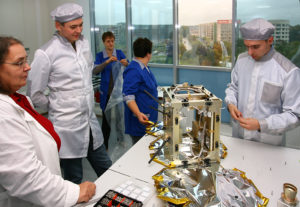
We had quite a story finding the launch operator. In the beginning, we had no funding. We used crowdfunding to get money. We had no idea how the launch would happen, and asked our long-time friends and colleagues at the SPUTNIX company, which at the time was the launch operator of the Dnepr rocket in Russia. We signed a contract with them and even made our first payment. But then it turned out that the Dnepr rockets would not be launched, and we had to look for another launch operator. We applied to the Innovative Solutions in Space company, which is a well-known launch operator. They made several commercial offers, which were more expensive than what SPUTNIX had offered. But, as the Dnepr rocket wasn’t going to be launched, we had no choice. But unexpectedly, representatives of the Glavkosmos Company came to us and offered a free launch on the Soyuz rocket, together with the Canopus-V-IC satellite. It was hard to believe! We were offered a free service which cost tens of thousands of dollars. I did not believe that it was possible until the very end. But we realized that we would not be able to collect the amount of money to pay for the launch services, so we paid close attention to the proposal of Glavkosmos. Indeed, we did not pay a penny for putting the satellite into orbit. The only thing that we paid for in regard to the launch was our business trip to Baikonur. It was the zero cost of launch that made us choose Glavkosmos.
Have you attracted investment from any public or private sources for the Mayak project?
We can probably say that private investment is the investment of our team members. Actually, crowdfunding can be considered as a private investment. We did not attract public investment and, as far as I can see, no state money was spent on the development of Mayak.
The Mayak satellite was developed by students and engineers of the Moscow Polytechnic University. What do you think is the potential of such projects to engage young people in space-related activities?
While working in the Mayak project I worked at the Moscow Polytechnic University and we had three students from there in the team. These guys took a very active part in the project. First, they conducted environmental and thermal-vacuum tests based on the methods developed by the engineers. They also developed and implemented a scheme for laying the polymer film under the lid of the satellite container and tested this film. In addition, they participated in the assembly and in various common operations.
From my point of view, such projects make it possible to get a really good engineer in the field of space technology when he or she graduates from the university. Various expert jobs are needed for this kind of projects. The satellite development has become a relatively inexpensive activity, so today universities can afford to spend some tens of thousands of dollars on regular production of spacecraft every year. Work on a real space project gives university graduates a great opportunity to get real experience in space exploration. By participating in as this kind of space project, a graduate can immediately get involved in real work when they join a state-run or private company. Unfortunately, I don’t see this happening in our country. Different universities launch their projects, but every time it happens it’s a huge event, and not a routine project. I guess we should look for ways to change this situation.
About the interviewer:
Evgeniy Ryzhkov studied space programs for two years in Japan and worked as a technical translator from Japanese at various factories. He is currently an editor and reporter with the ‘Novosti Kosmonavtiki’ magazine.
 SpaceWatch.Global An independent perspective on space
SpaceWatch.Global An independent perspective on space

